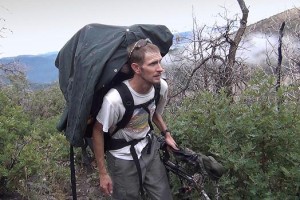 Best Foods for the Backcountry
Best Foods for the Backcountry
Napoleon once said, “An army travels on its stomach.” This certainly applies to hunters too. Hunting the Rocky Mountains is the most physically demanding thing many of us do each year, requiring nearly double your normal daily caloric intake. But finding the right foods with regards to nutrition while reducing weight can be a challenge.
Everyone has their own tastes when it comes to field food, but what we can all agree on is backcountry hunters need a steady diet of protein to build muscle in conjunction with a regular intake of carbohydrates for continual energy. In big buck country you’ll need plenty of both.
Prepare for the Worst
First off, carrying enough food is far more important than trying to save weight by bringing too little. This is especially important in cold weather because you’ll burn far more calories trying to stay warm. I’ve been chased off the snowy mountain before from lack of food, and it’s a lousy excuse for failure. Fortunately we live in the era of an abundant supply of pre-packaged, freeze-dried meals that take up little space and weigh practically nothing. Just add water.
Pre-Packaged Meals
On backcountry trips where weight is crucial, your best option is pre-packaged dehydrated meals like Mountain House. When choosing pre-packaged meals be sure to choose the highest protein content since most lack adequate protein for some dumb reason. For this reason I augment my pre-packed meals with precooked tuna and/or chicken pouches. Add them directly to the meal or eat it separately.
Note: Most freeze-dried meals can cost a pretty penny. Fortunately you can save about 25% by purchasing the #10 size can (10 serving size). Then use a vacuum sealer to create customized portions for your trip.
Carbs for Energy
You’ll get plenty of carbs from your Mt. House meals in the form of pasta or rice. Whenever possible you should avoid fast-burn, sugary foods such as candy, soda, white bread or crackers. Instead, reach for slow-burning carbs that will last all day and won’t burn you out. These include granola, oats (oatmeal or bars), beans, and whole-grain bread & snack bars.
Trail Snacks
For trail snacks in your daypack I recommend dried fruits, nuts, jerky (venison or beef), cereal bars, and boiled eggs. Dried fruit has plenty of natural carbs, plus much-needed fiber. Adequate fiber will further help you reduce weight in the field…for obvious reasons.
I always choose a variety of dried fruits with plenty of bananas. Bananas are a good source of potassium, magnesium, and calcium, three nutrients that help to ease muscle cramps.
Beautiful Boiled Eggs
Boiled eggs are a wonderful, high-protein, pre-wrapped food for both snacks and meals. I could live for weeks on boiled eggs alone, even without salt. The only drawback to eggs is they are relatively heavy and prone to freezing. Eggs are also perishable in warm weather so you’ll need a way to keep them cool. If possible store them in a small cooler, a stream, or snowpack. If eggs aren’t your thing, I recommend jerky or peanut butter for high-protein snacking.
Comfort Food
Other than nourishment of the body, food serves another purpose: nourishment of the soul. After a few rough days afield you’ll likely suffer some level of mental fatigue bordering on a breakdown. Hunger only exacerbates the problem. Therefore I recommend a small amount of comfort food (aka junk food), whether it’s a bag of Doritos, Snicker bars, or couple cans of Coke. This will cheer up your inner child and just might keep you on the mountain long enough to get the job done. Just take it easy on the snacking or you’ll just burn yourself out. Think “Emergency use only!”
Conclusion
Having enough good, nutritious food will do wonders for the hunter’s mind and body. Just remember, you’re not going to the mountain for a picnic, so keep it lightweight and simple. If things get really bad, you can always shoot an animal and eat that. We are hunters, after all!
Did I miss anything? Let me know what you like to eat at 10,000 feet.

